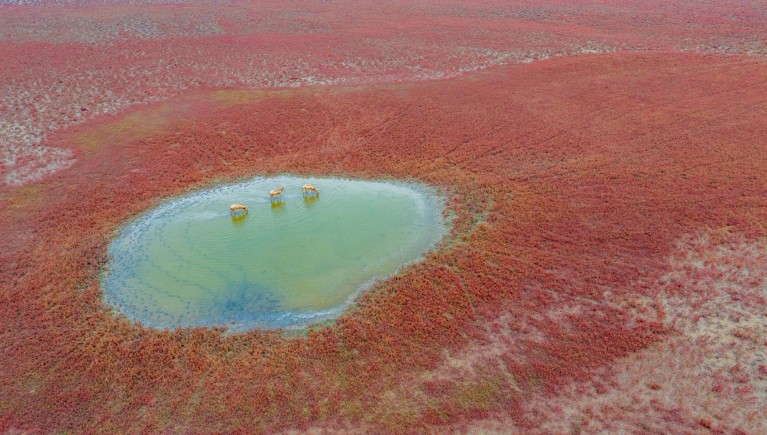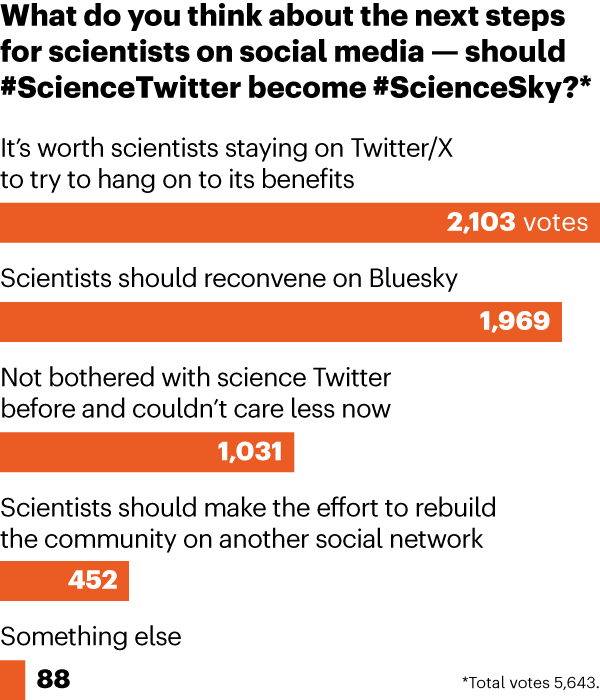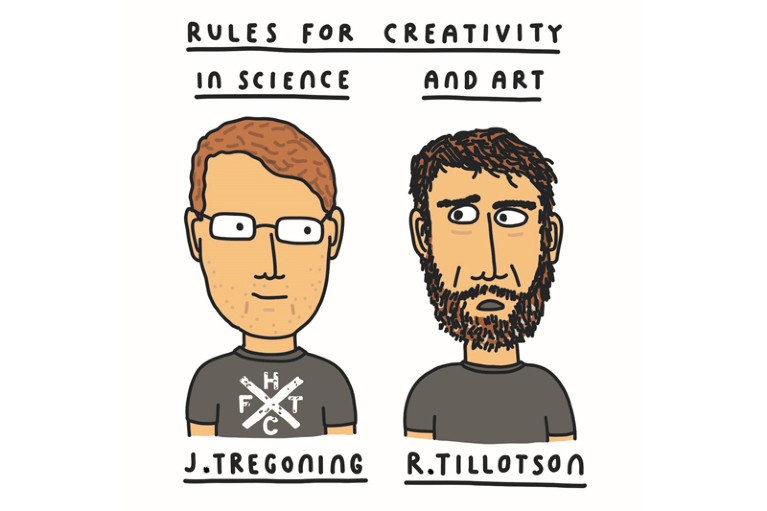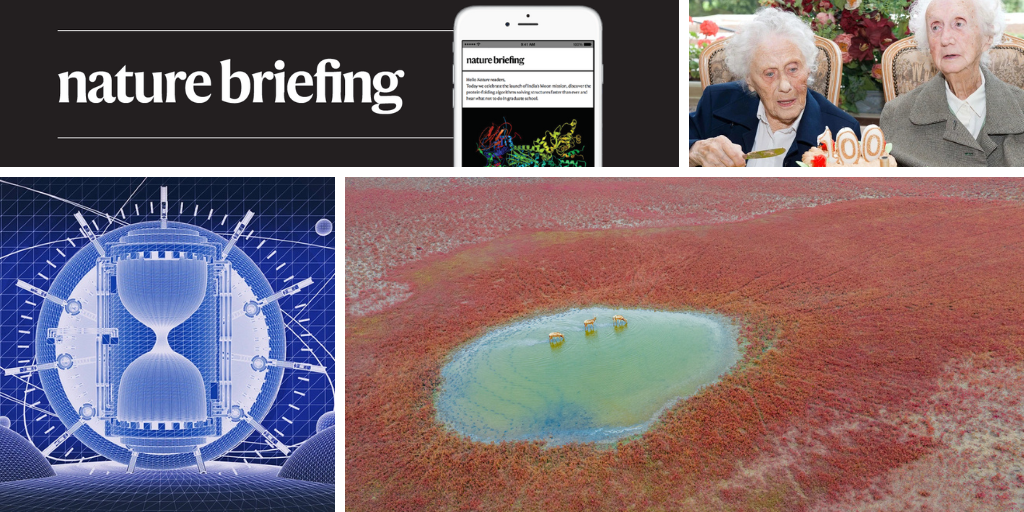Hello Nature readers, would you like to get this Briefing in your inbox free every day? Sign up here.

Credit: Costfoto/NurPhoto via Getty
Wild elk (Cervus canadensis) graze in the vibrantly coloured Tiaozini wetlands in China’s eastern Jiangsu province. The wetlands are carpeted by the Chinese mugwort shrub (Artemisia halodendron), which turns a bright red in autumn, attracting wildlife such as birds and the elk. This month, China established a research centre for elk in Beijing, which will use science to protect the highly protected animals. Their numbers dwindled in the twentieth century owing to natural disasters and hunting.
See more of the month’s sharpest science shots, selected by Nature’s photo team.
A bank of stem cells from the blood of people who have lived to be 100 years old are helping researchers to better understand the factors that contribute to a long and healthy life. Stem-cell biologist George Murphy and Tom Perls, a physician specializing in geriatrics, searched for centenarians in US voter-registration lists, news articles and long-term-care facilities. Many were happy to participate “because they know how special they are”, says Perls. Early experiments are already providing insights into brain ageing.
Question of the week: results
Should science tweeters flock to Bluesky?
Last week, we heard that a wave of academics and researchers have defected from the social media platform Twitter/X, with many heading to upstart Twitter-lookalike Bluesky. I asked what you thought — should #ScienceTwitter become #ScienceSky?
Many respondents, including most of those who emailled me, were worried about letting peddlers of fake news frolic unopposed on Twitter. “I feel a sense of duty to not abandon ship,” wrote process engineer Jon Gaide. “With Twitter being the most accessible digital public square, it’s important to do our best to prevent it from becoming an echo chamber of raw milk and science denial.”
Others asked, why not have both? “It’s important for our voices to reach those who are not scientists so that we may inform and combat misinformation,” wrote earth scientist Chris Schneider. “But it is equally important for us to be able to collaborate and communicate informally where we can find support and a ready ear.”
For those looking to follow Nature journals, editors and journalists (including yours truly) on Bluesky, here’s the Nature Portfolio starter pack.

Features & opinion

Illustrations: Richard L. Tillotson
Thinking like an artist can supercharge your science, write immunologist John Tregoning and his illustrator friend Richard Tillotson. Allowing yourself to daydream and building a routine around when you are most productive are key to letting creativity flow. Filling notebooks with doodles, mind maps and even shopping lists can trigger unusual connections that lead to fresh ideas. “There is a deep joy to this process,” they write.
An astronaut faces impossible odds with equanimity in Long orbit. And the desire for the latest tech toy backfires in Customer reviews for Mystery Gadget 1.0, sorted in chronological order.
Nature | 6 min read & Nature | 7 min read
In this week’s Nature Podcast, hundreds of pieces of fossilized faeces and vomit show how dinosaurs became Earth’s dominant land animals. Plus, researchers have identified a fungus that is well adapted to living in the gastrointestinal tracts of mice, an important step in modelling the role these microorganisms play in the body. And I talk to the Podcast about why the proof of the pudding is in the eating, especially when it comes to the contentious agreement that came out of the 29th UN climate conference (COP29).
Nature Podcast | 31 min listen
Subscribe to the Nature Podcast on Apple Podcasts, Spotify or YouTube Music, or use the RSS feed.
This week, Leif Penguinson is hanging out with the thousands of waterfowl at Great River and Clarence Cannon National Wildlife Refuges in Missouri. Can you find the penguin?
The answer will be in Monday’s e-mail, all thanks to Briefing photo editor and penguin wrangler Tom Houghton.
This newsletter is always evolving — tell us what you think! Please send your feedback to [email protected].
Flora Graham, senior editor, Nature Briefing
With contributions by Gemma Conroy
Want more? Sign up to our other free Nature Briefing newsletters:
• Nature Briefing: Careers — insights, advice and award-winning journalism to help you optimize your working life
• Nature Briefing: Microbiology — the most abundant living entities on our planet — microorganisms — and the role they play in health, the environment and food systems
• Nature Briefing: Anthropocene — climate change, biodiversity, sustainability and geoengineering
• Nature Briefing: AI & Robotics — 100% written by humans, of course
• Nature Briefing: Cancer — a weekly newsletter written with cancer researchers in mind
• Nature Briefing: Translational Research — covers biotechnology, drug discovery and pharma


